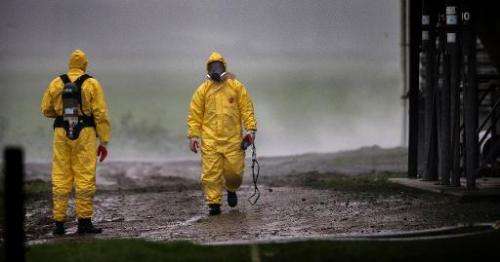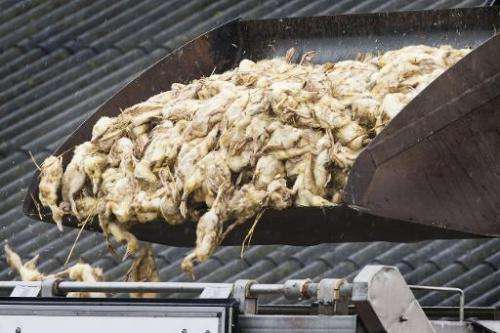New Dutch cull ordered after bird flu confirmed as H5N8

Dutch authorities on Monday ordered the cull of 50,000 poultry after a bird flu outbreak on a nearby farm was confirmed as the highly pathogenic H5N8 strain.
The precautionary move came after authorities on Sunday identified bird flu at a poultry farm at Zoeterwoude outside The Hague, where 28,000 birds needed to be culled.
"There is another poultry farm within one kilometre (over half a mile) of the affected farm," the economics ministry said in a statement.
"Now that H5N8 has been confirmed, the birds on that farm will now be culled. There are around 50,000 birds."
Two other farms within a 10-kilometre radius have been given the all clear, and another farm is under investigation, the ministry said.
The highly-infectious H5N8 strain of bird flu was discovered in the Netherlands two weeks ago, where authorities suspect it might have been brought in by birds migrating from Asia.
Amid questions about how the flu is being spread, Rotterdam's Erasmus University said that the H5N8 strain had been found in wild bird droppings near Utrecht and was almost identical to the strain that has infected Dutch poultry.
The virus was found in droppings from migrating Eurasian wigeons, a type of duck, the university said in a statement, stressing that the spread of the disease in migrating birds was not yet known and no measures need currently be taken against them.
Some strains of avian influenza are fatal for birds, and pose a health threat to humans, who can fall sick after handling infected poultry.

Dutch authorities have said human infection can only occur following "intense and direct contact" with infected birds.
The H5N1 strain of bird flu has killed more than 400 people, mainly in Southeast Asia, since first appearing in 2003. Another strain of bird flu, H7N9, has claimed more than 170 lives since emerging in 2013.
The latest outbreak lies about 35 kilometres (21 miles) northwest of Hekendorp, where the first outbreak was detected in mid-November, leading to around 150,000 birds being destroyed.

Bird flu has been detected in at least three other locations in the Netherlands. Germany and Britain have also reported similar strains of the virus.
The H7N7 strain of avian flu severely hit the Netherlands in 2003 with health authorities destroying some 30 million birds in an effort to quash an outbreak.
There are some 95 million chickens on Dutch poultry farms and egg exports totalled some 10.6 billion euros ($13.2 billion) in 2011, according to the latest Dutch statistics.
© 2014 AFP















